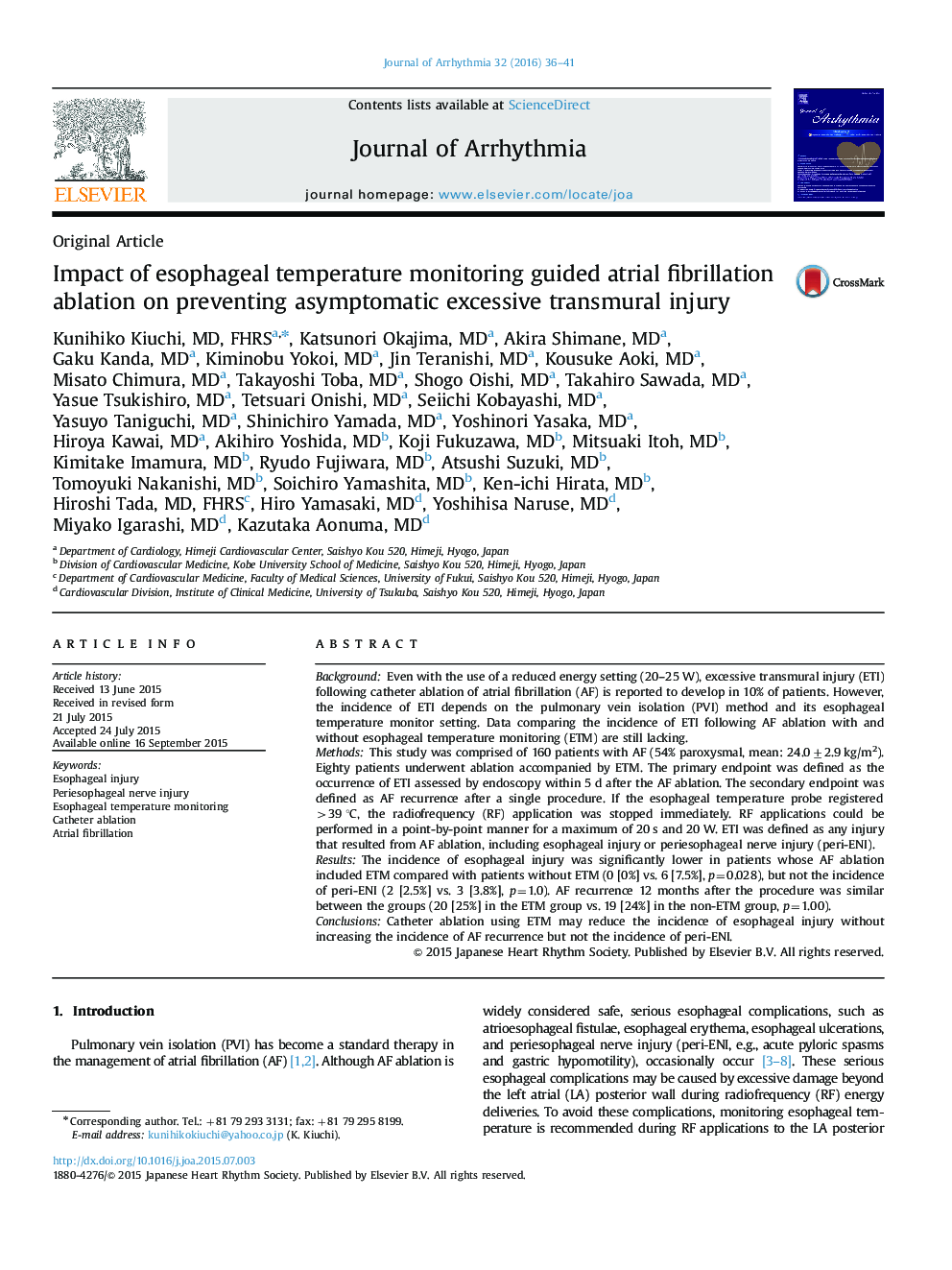| Article ID | Journal | Published Year | Pages | File Type |
|---|---|---|---|---|
| 2957575 | Journal of Arrhythmia | 2016 | 6 Pages |
BackgroundEven with the use of a reduced energy setting (20–25 W), excessive transmural injury (ETI) following catheter ablation of atrial fibrillation (AF) is reported to develop in 10% of patients. However, the incidence of ETI depends on the pulmonary vein isolation (PVI) method and its esophageal temperature monitor setting. Data comparing the incidence of ETI following AF ablation with and without esophageal temperature monitoring (ETM) are still lacking.MethodsThis study was comprised of 160 patients with AF (54% paroxysmal, mean: 24.0±2.9 kg/m2). Eighty patients underwent ablation accompanied by ETM. The primary endpoint was defined as the occurrence of ETI assessed by endoscopy within 5 d after the AF ablation. The secondary endpoint was defined as AF recurrence after a single procedure. If the esophageal temperature probe registered >39 °C, the radiofrequency (RF) application was stopped immediately. RF applications could be performed in a point-by-point manner for a maximum of 20 s and 20 W. ETI was defined as any injury that resulted from AF ablation, including esophageal injury or periesophageal nerve injury (peri-ENI).ResultsThe incidence of esophageal injury was significantly lower in patients whose AF ablation included ETM compared with patients without ETM (0 [0%] vs. 6 [7.5%], p=0.028), but not the incidence of peri-ENI (2 [2.5%] vs. 3 [3.8%], p=1.0). AF recurrence 12 months after the procedure was similar between the groups (20 [25%] in the ETM group vs. 19 [24%] in the non-ETM group, p=1.00).ConclusionsCatheter ablation using ETM may reduce the incidence of esophageal injury without increasing the incidence of AF recurrence but not the incidence of peri-ENI.
